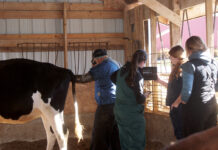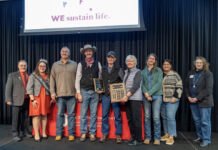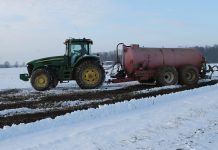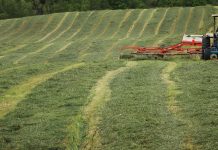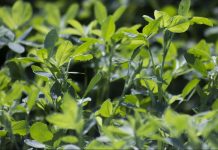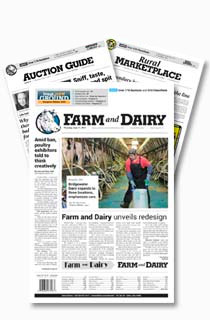
By Abby-Gayle Prieur
Pheasants Forever and Quail Forever
Have you ever imagined life in Ohio before the boom of transportation, technology and a global economy? It was a time when routine travel and resources for survival were limited by how far you could get on your own two feet or on the back of a horse.
The food for every meal was grown, foraged or hunted nearby. Shelter was built with trees that were locally cut and stone that was locally quarried. Even friends and spouses were locally sourced. You were more likely to marry the boy or girl next door, simply because it was rare to meet others from faraway places. People lived with the land and interacted most often with their family and neighbors.
This slower pace of life may sound attractive in our busy world, but there was also much more risk. If a crop failed or winter food stores ran short, people went hungry. If the river flooded or the pass through the foothills was blocked, people depended on the resources and community at hand. Any long-distance travel required a lot of energy, and the traveler was certain to encounter challenges such as dangerous wildlife, accidents, adverse weather, limited food and shelter or people who did not want you passing through.
Most Ohioans have left this way of life behind. Many of us are lucky to have everything we need, and more, right at our fingertips. Safe modes of transportation are readily available, and when we cannot find or travel to what we need, there is always the internet.
However, some beings have not and will never shift towards this modern lifestyle. Ohio wildlife populations are still living hand-to-mouth as the people did before us. Wildlife are still limited by the resources — food, water, shelter, fellows and mates — that are found within the area accessible by foot or wing. There is no online shopping or dating apps for them.
Habitat islands
Our natural world is increasingly fragmented. This means that patches of wildlife habitat still exist, but they are cut off from each other by areas where habitat is lacking. Without safe zones to move between them, wildlife can become stranded on these islands of habitat. If the island does not provide everything that the population needs to survive and create the next generation, individuals must travel across unfriendly territory to find whatever is missing. They risk literal life and limb to cross a landscape that is often dangerous and no longer suitable to their needs.
Human development, mowed turf, crop fields and roads pose challenges to wildlife that must travel between patches. They either have inherent threats, such as animal-vehicle collisions on roads, or expose animals to increased risk of predation by other wildlife or pets. Accessing additional habitat can be especially hard for animals that are small, prey species, lacking wings or have specific habitat needs. Thus, when managing for wildlife, it is important to think not only about food, water and shelter on your own plot of land, but also about how wildlife travel to additional resources nearby.
Creating corridors
Habitat fragmentation is a sad story but aiming to remedy it is a huge opportunity for people to boost up dwindling populations of beloved species like pheasants, quail and pollinating insects. Habitat improvement for these species often focuses on creating new blocks or fields of native vegetation. This is very important, but identifying existing habitat patches and figuring out how to connect them is essential, too. Doing so allows wildlife to move across the landscape without so much risk.
Improving and expanding habitat along field borders, fence rows, creeks and ditches, roadways, utility easements or railroad tracks is great place to start. These linear features often run across property lines and act as “corridors.” You may go so far as to plant native trees, shrubs, grasses or wildflowers to create new habitat. However, there are various low-effort options, as well. This can include reduced mowing, leaving buffers of unharvested crops or letting field edges grow up into grass and brambles. These options all provide areas for wildlife to forage, avoid predators and hide from human activity as they move between patches.
Expanding existing habitat islands toward the next nearest patch is another obvious win, as it shortens the distance that wildlife must travel to get to new suitable habitat. To do this, look for the two nearest farm woodlots, fallow fields, wetland areas, native grasslands, rotationally grazed pasture or odd areas on your own property as well as your neighbors. Explore what you could do to make the ground between the patches more friendly for the wildlife you want to support.
Results
The effort to connect habitat becomes especially exciting when a species of interest shows up in a new place for the first time in decades. This is currently happening in areas of southern Ohio, where bobwhite quail are moving back onto private properties where they have not been heard or seen in a long time. Landowners who are lucky enough to have land near existing quail footholds are making the effort to improve habitat and expand corridors such as fence rows and hedgerows, thereby enabling birds to find new territory and safely move in.
If you’d like assistance with identifying and improving wildlife habitat on property that you own or manage, reach out to a Pheasants Forever and Quail Forever farm bill biologist, an Ohio Division of Wildlife management consultant or a wildlife specialist from your county’s soil and water conservation district office. These experts offer free habitat planning assistance and can also connect you with financial assistance programs.
(Abby-Gayle Prieur works for Pheasants Forever and Quail Forever as a farm bill biologist III. Her work focuses on assisting private landowners who wish to create habitat for wildlife, especially pollinating insects. She can be reached at 330-577-3804 or aprieur@pheasantsforever.org.)


